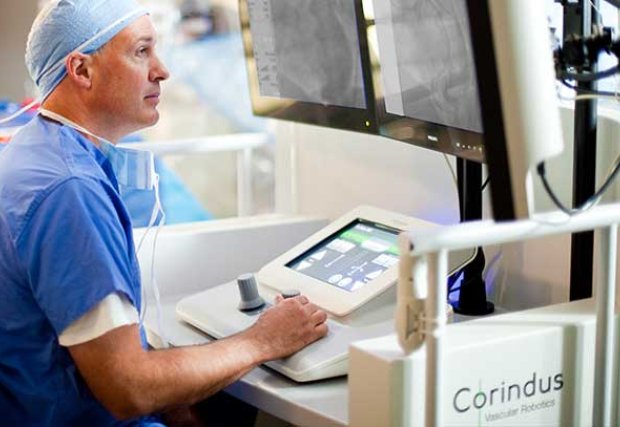Heart Procedure a First in Texas at Northwest

Doctors at Northwest Texas Healthcare System have performed the first robotic-assisted coronary angioplasty in Texas using the Corindus CorPath® System. Coronary angioplasty is a procedure used to open a blocked artery to restore normal blood flow to the heart.
Northwest Texas Healthcare System used the FDA-cleared CorPath System on two patients with severely blocked arteries on October 13, 2016. “Vascular robotics offers our patients and physicians minimally invasive technology that enhances traditional angioplasty. We are proud to bring this advanced technology to residents of the Texas Panhandle. With the region’s only Heart Hospital, Northwest continues to be a major leader in cardiovascular care,” said Mark Crawford, CEO.
“Combining the enhanced visualization of the angiographic images with robotic precision will transform the way we perform angioplasty procedures and should ultimately improve patient care,” said Ginny Ginithan, Director of Cardiac and Radiology Services.
Aging Population Drives Need
Coronary artery disease, characterized by plaque buildup that restricts blood flow in the arteries, is a widespread and life-threatening condition. It is the most common form of heart disease and the leading cause of death in the U.S. Percutaneous coronary intervention (PCI), or angioplasty, is the most common treatment for CAD. In this procedure, a balloon is used to physically open an artery blockage and help improve blood flow. During an angioplasty, interventional cardiologists often use stents, metal mesh tubes, to prop open the artery and keep it open following the procedure. While angioplasty procedures remain one of the most frequently performed procedures in the United States with over 900,000 cases annually, the procedure itself has remained largely unchanged for decades.
“An aging baby boomer population is driving demand for new, innovative technologies to treat CAD,” said Ginithan. “Vascular robotics offers physicians and patients a minimally invasive technology that improves the precision of stent and balloon placements and reduces radiation exposure during the procedure for physicians.”
